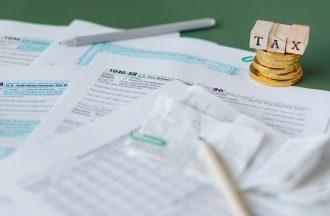
All self-employed business owners want to save on their taxes of course. The question is, how? There are many different strategies you can adopt but the important thing is to not wait before deciding to take action. Some work now can go a long way to reducing your tax bite later. The main approach of course is to set up a tax-free retirement account if you don’t have one.
Here are your choices:
1. KEOGH Plans. A KEOGH retirement plan allows entrepreneurs to contribute significant sums every year into a tax-free account (the amount varies). KEOGHs are fairly complicated to create and the assistance of a financial advisor is required. There are several benefits to starting a KEOGH retirement plan:
- Contributions are deducted from gross income.
- Taxes are deferred until the money is withdrawn.
- Interest earned is also tax deferred until withdrawn.
- Contribution amounts are more liberal than with IRAs.
2. Solo 401(k). This plan is great because of its high contribution limits. A solo 401(k) allows you to contribute up to $49,000 a year into your retirement account ($54,500 if you are 50 or over).
3. SEP IRAs. A Simplified Employee Pension Individual Retirement Account (SEP IRA) is a plan that allows you to contribute and deduct up to 20 percent of your income into a tax-deferred retirement account. SEPs are indeed simple: They can be created in a few minutes at a bank or brokerage house with no professional help required and no annual government reports are required. They beat regular IRAs because they allow for larger contributions.
ROTH IRAs: You may be tempted to also set up a traditional ROTH IRA. While that may be good for retirement purposes, it does little for you business-wise as contributions are not tax deductible.
One last bonus for creating a business retirement plan: You can get a tax credit of up to $500 for the first three years of the plan if you have less than 100 employees.
One thing to understand about your business retirement plan: If you do set up a SEP, Solo 401(k) or KEOGH, you have to offer it to your employees as well. This means you will likely need to make contributions that don’t just cover you. Because of this, you should consult with an employee benefits pro before setting up any sort of retirement plan for you and your employees.








